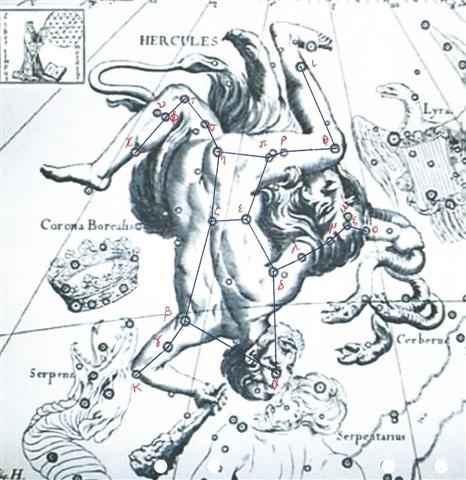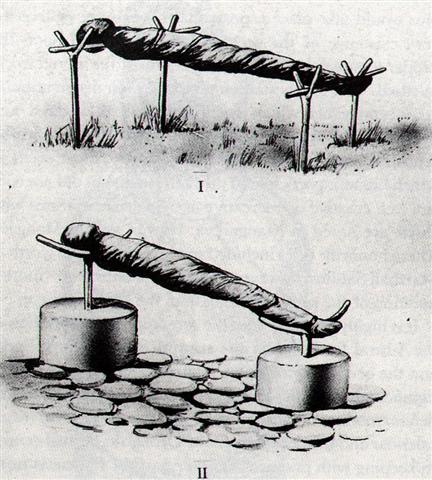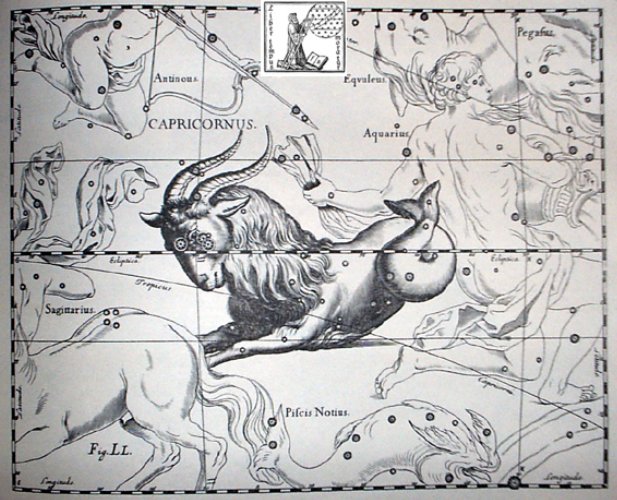Perhaps we should study side b separately from
side a?
|
Side a |
|
57 |
 |
334 |
|
Ca3-7
(58) |
| e
hokohuki mau ki te matagi |
|
392 |
|
Side b |
|
97 |
 |
146 |
 |
103 |
|
Cb5-4 (490) |
Cb10-15
(637) |
|
tagata mau matagi |
te matagi ma te rau hei |
|
348 |
146 = 2
/ 5 * 365 and 740 - 146 = 594 = 6 * 99 = 300 + 294.
From
Cb10-15 to the end of side b there are 104 glyphs (8 * 13
days).
From
Cb1-1 to Cb10-15 there are 98 + 146 = 244 glyps (= 4 * 61 days)
From
Ca1-1 up to and including Ca3-7 there are 58 glyphs (2 * 29
days).
58 +
146 = 204 and 740 -
204 = 536 (= 2 * 268).
536 - 104 = 432.
From Ca3-7 to Cb5-4 there are 334 + 98 =
432 glyphs but only 431 days (because April 17 occurs twice).
432 = 6 * 72 = 12 * 36 = 18 * 24.
There is a dot in front at Cb5-4 and also a
vertical line of measurement. 146 + 104 = 250 (= 740 - 490).
Given these numbers we could expect a new season
would arrive after 7 fortnights counted from Cb1-1, with Cb5-5 where 5 * 5 agrees with
Bright Fire,
because 25 is a Saturn number and fire was kept by Saturn.
491
(Cb5-5) - Cb1-1 (393) = 98 and April 17 (107 at Cb1-1) + 98 =
205 (July 24).
289
(October 16 at Cb1-1) + 98 = 387 = 365 + 22 = January 22.
|
January 21 |
|
22 (387) |
23 |
24 |
141 |
 |
 |
 |
 |
|
Cb5-4 (490) |
Cb5-5 |
Cb5-6 |
Cb5-7 |
|
tagata mau matagi |
ihe
toga maa |
ura
hia |
tagata maú kihikihi erua |
|
ξ Capricorni (305.8) |
Gredi (307.2), σ
Capricorni (307.5) |
Al Sa’d
al Dhabih /
Ox Herd
Boy |
Peacock (308.7) |
|
Alshat (307.9),
DABIH (308.0),
κ Sagittarii (308.1), Sadir (308.4) |
|
July 23 |
24 (205) |
25 |
26 |
|
Al Tarf (124.3) |
Bright Fire (125.4) |
Avior (126.4) |
ο
Ursa Majoris (127.4) |
|
June 15 |
16 |
|
17 |
18 (169) |
19 |
20 |
 |
 |
 |
 |
 |
 |
|
Cb10-13 |
Cb10-14 |
Cb10-15 |
Cb10-16 |
Cb10-17 |
Cb10-18 (640) |
| te
moa nui - kua vaha |
te
hokohuki- te mata |
te matagi ma te rau hei |
te
hokohuki - te moko |
te
kava - te hokohuki |
te
kihikihi i te rima o
te tagata |
|
γ
Leporis (85.9), μ Columbae (86.1), Saiph (86.5) |
ζ
Leporis (86.6) |
Wezn (87.6), δ
Leporis (87.7), Tze (87.9),
BETELGEUZE (88.3),
ξ Columbae (88.5) |
σ Columbae (88.7),
η Leporis (89.0),
Praja-pāti, Menkalinan, Mahashim,
γ Columbae (89.3) |
η Columbae (89.7),
μ Orionis (90.3) |
6h
(91.3) |
Zuben Elgenubi 533 |
ν Orionis (91.4),
θ Columbae (91.5) |
|
December 15 |
16 |
17 |
18 |
19 |
20 (354) |
|
Kew Ho (268.6), η
Pavonis (268.7), Apollyon (268.9), Muliphen (269.0),
Basanismus (269.5) |
Pherkard (269.9),
Ptolemy Cluster (270.5) |
Rukbalgethi Genubi
(271.1), ξ Herculis (271.5) |
Etamin, ν Herculis
(271.7), ν Ophiuchi (271.8), ζ Serpentis (272.4) |
τ Ophiuchi (272.9) |
18h
(273.9) |
|
NASH (273.7), θ Arae (273.8), Zhōngshān
(274.0) |
I have
here corrected a mistake of mine earlier. Cb10-13 is glyph 635
and although I earlier counted correctly to December 15 (349) by
adding 635 - 393 = 242 days to April 17 (107) the correct
heliacal date should be October 16 (289) + 242 - 365 = 166 (June
15).
The Chinese 9th station
Ox / Herd
Boy was, reasonably, connected with a Buffalo:
|
1 |
Horn |
α Virginis
(Spica) |
Crocodile |
(202.7) |
Oct 10 (283) |
283 = 265
+ 18 |
|
2 |
Neck |
κ Virginis |
Dragon |
(214.8) |
Oct 22 (295) |
295 = 283
+ 12 |
|
3 |
Root |
α Librae
(Zuben Elgenubi) |
Badger |
(224.2) |
Oct 31 (304) |
304 = 295
+ 9 |
|
4 |
Room |
π Scorpii
(Vrischika) |
Hare |
(241.3) |
Nov 17 (321) |
321 = 304
+ 17 |
|
5 |
Heart |
σ Scorpii |
Fox |
(247.0) |
Nov 23 (327) |
327 = 321
+ 6 |
|
6 |
Tail |
μ Scorpii
(Denebakrab) |
Tiger |
(254.7) |
Dec 1 (335) |
335 = 327
+ 8 |
|
7 |
Winnowing
Basket |
γ Sagittarii
(Nash) |
Leopard |
(273.7) |
Dec 20 (354) |
354 = 335
+ 19 |
|
December
solstice |
|
8 |
South Dipper |
φ Sagittarii
(?) |
Unicorn |
(284.0) |
Dec 30 (364) |
364 = 354
+ 10 |
|
9 |
Ox / Herd
Boy |
β
Capricornii (Dabih) |
Buffalo |
(308.0) |
Jan 23 (388) |
388 = 364
+ 24 |
It is tempting to see rau hei
in Cb10-15 as Betelgeuze (head down) but more in proper order
would be to
understand the glyph as signifying the midnight
culmination in June 17 (168) of the Southern Claw (Zuben
Elgenubi, α Librae).
At the other
end of the sky was another 'genubi' star,
viz.
Rukbalgethi Genubi
(θ Herculis). Possibly, I guess, genubi
should be understood as 'knee' - a point in time
between a pair of well ordered seasons. Hevelius may
have thought so too, because he drew θ Herculis at
the left knee of Hercules:

|
Egyptian
nfr |
 |
Phoenician
teth |
 |
Greek
theta |
Θ (θ) |
|
... The form of the
letter θ
suggests a midline ('waist'), although the origin of θ
is the Phoenician tēth which means 'wheel'. This
in turn could have originated from a glyph named 'good'
which in Egypt was nfr ...
... θ is the last star in the Ara constellation, and the
ancient meaning of this letter was described as a wheel
by the Phoenicians but for the Egyptian it meant 'good.
When the wheel of time has come full cycle around and
the upside down fire-altar is in the past the times
ahead should be good (or lucky Sa'ad)
... |
At Cb5-5 we can assume there was a contrast between
the Bright Fire (λ
Cancri) seen close to the Full Moon in January 22 on
one hand and Gredi (α Capricorni) together with the
Sun on the other. Sun was at the opposite side of
the Bright Fire - probably meaning he had completely
lost his Fire.
This interpretation is
supported by Metoro. Ihe toga ought to
indicate a point (ihe) down in the south (toga):

As regards the word maa it could be related
to the central ceremonial ground (raaraa = no
Sun):
| Mara
To start rotting, going bad (e.g. a
lobster, a fish). See also mamara. Vanaga.
Mgv.: mara, open land,
cultivated field. Mq.: mara,
maa, land under tilth.
Ta.: amara, the first stone of a marae, etc. Sa.:
mala, a new plantation. Ma.: mara, land
under tilth. Churchill.
Sa.: malae, the town green.
Nukuoro: malae, a cleared space, an open place, a
plantation. To.: malae, a gree, a grass plot ...
Ha.: malae, smooth (as a plain) ... Ma.: marae,
an inclosed place in front of a house. Ta.: marae,
the sacred place of worship ... Vi.: mara, a
burying place ... In note 261 I have advanced the
opinion that malae is in form a conditional
derivative of lae. This holds of the
signification found in Nuclear Polynesia. The secondary
sense which the Tongafiti carried to eastern Polynesia
has obscured the lae element; but the sacrosanct
content of the marae in the four-godded theology
of eastern Polynesia is after all but a logical
outgrowth of the Nuclear Polynesian malae as the
civic center of social life where god is sole, surpreme
- and Lucretian ... Churchill 2. |













